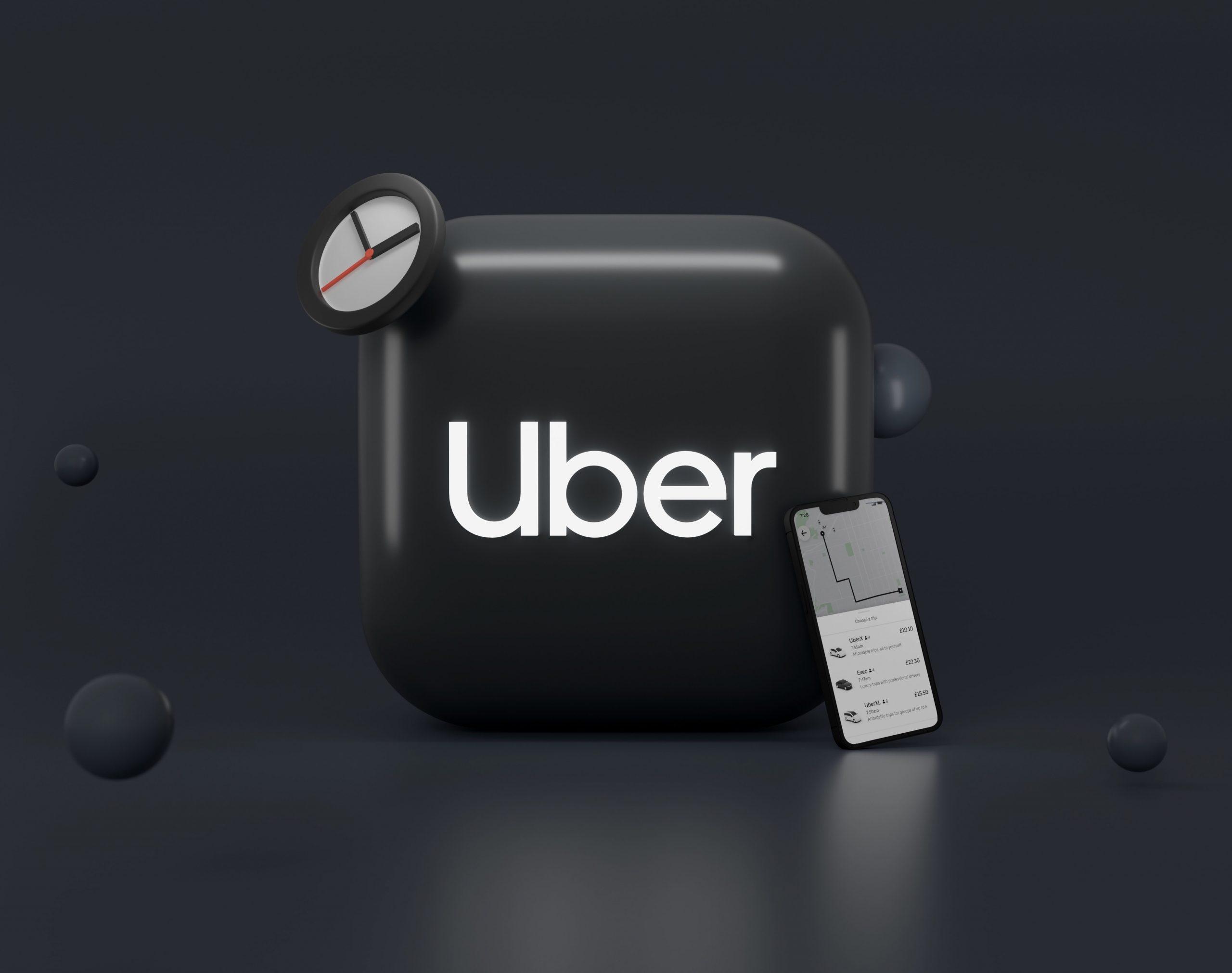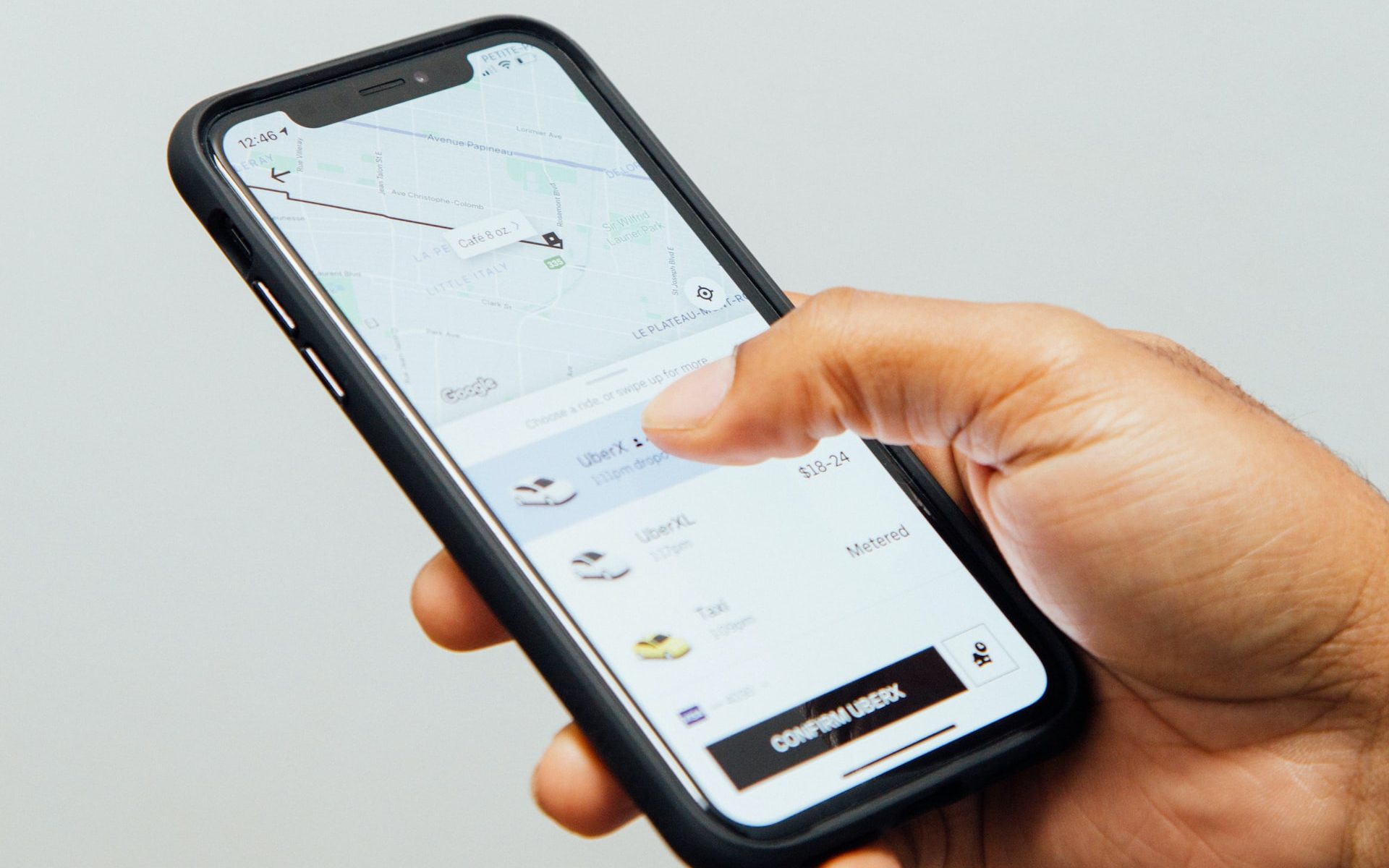
Exploring Uber’s Tech Stack & Software Architecture — The Tech Behind Series
Julian Wallis
14 min read

In the world of transportation, it’s safe to say Uber has become a household name. The ride-booking app has revolutionised how people get around, offering a convenient and reliable alternative to traditional taxis.
But have you ever wondered what makes Uber’s app so successful? The answer lies in its powerful tech stack, which enables seamless communication between drivers and riders, real-time location tracking, and efficient route optimisation.
In this article, we’ll take a deep dive into Uber’s tech stack and explore how it powers the most popular ride-booking app in the world. So buckle up and get ready for a fascinating journey. It’s the tech behind Uber!
Brief History Of Uber ⏳

Before we get into the technical nitty-gritty, let’s briefly recap the journey that the mobility platform has taken as a company from its inception to this day. Then, we’ll end this section with the exciting news that Uber plans to roll out very soon. So, be sure to be on the lookout for that.
Uber was founded in 2009 by Garrett Camp and Travis Kalanick, who proposed a ride-sharing app while attending a tech conference in Paris. Frustrated with the traditional taxi service, they wanted to introduce a more efficient and reliable way of getting around, leveraging technology to connect riders with nearby drivers to provide maximum convenience to passengers.
UberCab, the first version of Uber, was launched in San Francisco in 2010. The app allowed users to request a ride and pay for it through their smartphones, with the fare calculated based on distance and time.
Unlike traditional taxis, Uber drivers weren’t licensed professionals but ordinary people with their cars who signed up to provide rides as a part-time gig or a full-time job.
The ride-sharing concept quickly caught on, and Uber expanded rapidly to other cities in the US and later worldwide. However, the company faced resistance from established taxi companies and regulators who needed to be more accepting of its business model and safety standards.
Uber’s popularity has grown tremendously over the years thanks to its competitive pricing, convenient service, and innovative features like real-time location tracking and cashless payments.
That said, the company has faced numerous challenges, including controversies around safety, labour practices, and regulatory compliance. Yet still, it remains one of the most successful and widely-used ride-sharing apps in the world, with millions of users and drivers in over 600 cities across the globe.
🔮 The Future Of Ride-Sharing: What’s Next For Uber?
Uber recently signed a 10-year partnership deal with Motional, a joint venture between Hyundai and Aptiv, marking their return to the autonomous vehicle (AV) space. As per the deal, Motional’s AVs will be utilised for both the Uber and Uber Eats sides of the business. While the details of this service remain scarce, the company is believed to be planning to launch in multiple US cities with a view of transitioning to other countries, depending on the results observed.
Suppose the AV service was to see the light of day. In that case, customers can expect exciting new features such as the ability to open the car door from the Uber App, start the ride and communicate with the platform’s customer service once inside the car.
This is all well and good, but how is it all made possible? What’s the underlying technology in these AVs? Uber’s ATG division is responsible for developing and optimising the autonomous vehicles and self-driving cars it employs. ATG’s technological implementations help the vehicles perceive and predict the world’s dynamics through the combination of AI/ML (Artificial Intelligence & Machine Learning) and a built-in multi-sensor system. Through various technologies, the vehicle can access historical performance data to predict future states of the road and choose the correct path.
How Uber’s Tech Stack Has Evolved Over the Years 🌱
Now that we know a bit about Uber’s past and future as a company, let’s do something similar but concerning their tech stack, particularly concerning their software.
Uber’s tech stack has undergone significant evolution since its inception. In the early days, the app was built on a simple technology stack that included Python, MongoDB, and MySQL for the backend services and Node.js and Redis were used for the dispatch systems. The iOS and Android Apps were developed using a combination of Objective-C and Java, while its website was built using Backbone.js.
In 2014, the platform started focusing heavily on Big Data generation. Before this, their company data could be stored in traditional online transaction processing databases. However, this resulted in productivity issues as each time data across databases required connecting; developers would have to write unique code. Starting with a Vertica-centric setup, Uber later transitioned to Hadoop for its Big Data platform to overcome scalability demands.
However, as the company grew and expanded, it needed a more robust and scalable infrastructure to support its millions of users and drivers. As a result, one of the critical innovations in Uber’s tech stack has been the development of its real-time data processing platform called Apache Kafka.

In 2015, with the app’s user base growing exponentially alongside the addition of new services like Uber Eats and Freight, the demand for the software infrastructure was unlike anything it had ever been before. Therefore, they decided to build Catalyst, an internal serverless computing solution, to facilitate a decoupling between consumption and production and introduce an abstraction layer between consumers, developers, and the infrastructure.
This system enables the company to process and analyse vast amounts of data in real time, allowing for more efficient and effective decision-making. Another essential component of Uber’s tech stack is its microservices architecture, allowing for greater software development flexibility and agility.
Uber has also invested heavily in machine learning and artificial intelligence (AI) technologies to improve its service and user experience in recent years. For example, the company has developed AI-powered algorithms to optimise route planning and dispatching and machine learning models to detect and prevent fraud and improve safety.
After two intense years of effort in 2015 to deliver a comprehensive ML solution across their organisation – avoiding common mistakes and streamlining processes along the way – they proudly announced Michelangelo. This breakthrough platform enabled users to access crucial features such as data management, training models, deployment options for predictions and monitoring forecasts: all under one roof.
Uber has also made significant investments in cloud computing and containerisation technologies, such as Kubernetes and Docker, to enable faster and more efficient deployment of its applications and services.
Uber’s Current Tech Stack 👨💻
Uber’s software architecture comprises three primary components – the marketplace, its web, and its mobile applications. Let’s take a closer look at the different technologies involved in each element.
🏪 Uber’s Marketplace
The Marketplace is where Uber drivers are connected to users looking for rides nearby. Uber’s marketplace component predominantly handles data analytics and data streaming functionalities. Therefore, for its maintenance, Uber always has a dedicated development team.
This team includes data specialists, integration experts, and front and backend engineers who code the infrastructure and integrate new data solutions. The leading technologies incorporated in the marketplace are Python, Node, Go, and Java.
The trip execution engine is the backbone of Uber’s marketplace platform. To ensure scalability and security, developers got creative with their development approach: Node.js runtime environment was used to manage multiple concurrent connections.
Go provides unmatched safety, efficiency, and concurrency for new services created within the company. In addition, an NGINX front end handles authentication through SSL encryption for complete versatility in routing requests from passenger or driver mobile devices. Finally, logtron – a cutting-edge open-source module – enables connection between internal infrastructure components like Kafka or logging storage through its custom-built node client.

For their online operations, developers relied on Ringpop: a library crafted internally at Uber to meet the most demanding availability requirements. This remarkable tool gives them access at an application level to distributed databases like DynamoDB and Riak with partition toleration in mind. The logic behind its operation was written in Node.js and Go for maximum efficiency. At the same time, Sevnup provided support when nodes went down or ownership of particular objects needed transferring between hashing nodes – something that would otherwise be impossible.
🌐 Uber’s Web Application
With a growing demand for their web-based app of the transportation platform, Uber developers decided to jumpstart in 2019 – ditching Node.js and instead opting for Fusion.js – Uber’s own modular JavaScript framework that enabled React applications with its plugin-based design.
Uber’s client-side app uses Browserify, an open-source tool that lets developers write Node.js modules optimised for the browser. They also use a base web server called, Bedrock – built with Express.js, a favourite backend framework that provides security and internationalisation to ensure seamless user experiences and critical infrastructure integrations.
🤳 Uber’s Mobile Applications
Uber has been taking mobile app development very seriously, as it is the hub of its operations. It’s surprising when you realise that Uber has four different versions of its mobile applications – two user apps on Android and iOS and two driver apps on the same platforms. Furthermore, the platform’s developers built the iOS apps using Objective-C and Swift, while the Android apps were built with Java.
How Does The Uber App Work Exactly? 📲
We hope you have a clearer idea of all the different technologies that Uber incorporates to enable its functionality and provide a seamless experience for riders and drivers. It is important to note that every ride requests a passenger makes generates massive amounts of data. This is because, at that very instance, the app receives information about the passenger, location, credit card information, other drivers nearby, their names and car details, and the dynamic ride cost and distance. But how does all of this information travel across the system so quickly?
The platform stores ride information on the database right after you push a button to find a cab. Next, it will begin processing your ride request with the current geolocation and then project the processed data to the matching algorithm. Finally, the algorithm will search for information about drivers nearby in the database until it finds the one who accepts your request.

But that’s more of how the algorithm and the technology interact with each other. So let’s discuss more how the different technologies contribute to the working of the overall application.
- Mobile app development: The Uber app is built using mobile app development technologies, such as iOS and Android development frameworks, to create a user-friendly interface for riders and drivers.
- Real-time data processing: The app uses real-time data processing technologies to inform riders about nearby drivers and estimated arrival times. This requires collecting and processing data from various sources, including GPS sensors on drivers’ phones and real-time traffic data.
- GPS tracking: The app uses GPS tracking technologies to track the location of both riders and drivers, allowing for real-time location updates and precise navigation.
- Payment processing: The app uses secure payment processing technologies to allow riders to pay for rides using a stored credit card. This requires integrating with payment processing providers and implementing secure data storage and encryption.
- Machine learning: As discussed previously, Uber also uses machine learning algorithms to optimise its ride matching and pricing algorithms. These algorithms analyse data on rider behaviour, driver availability, and traffic patterns to make the ride experience more efficient and cost-effective.
- Cloud infrastructure: The app runs on a cloud-based infrastructure, which allows for scalable and reliable processing of large volumes of ride requests and data.
How Difficult Is It To Build An App Like Uber? 🏋️
Building an app like Uber is a highly complex and challenging undertaking that requires significant expertise and resources. It is by no means a small feat, especially in today’s age, where the existing competition in the ride-sharing space is so far ahead with its product offering. But to elaborate further, here are the key factors that make building an app like Uber difficult.
⚙️ Technological Sophistication
Developing a ride-sharing app requires various technologies, including real-time data processing, GPS tracking, payment processing, and mobile app development. Therefore, the development team must have expertise in all these areas and the ability to integrate these technologies into a seamless and user-friendly experience.
📈 Mandatory Scalability
An app like Uber must be able to handle a large volume of users and rides at any given time. This requires a scalable infrastructure that can handle spikes in demand and prevent downtime or crashes.
🤝 Compliance With Regulations
Ride-sharing services are subject to a complex and constantly evolving regulatory environment, with different rules and requirements in various jurisdictions. Therefore, building an app like Uber requires a deep understanding of these regulations and the ability to comply with them.
🦺 Safety & Security
Ensuring the safety and security of riders and drivers is a top priority for ride-sharing services. This requires implementing robust safety features, such as driver background checks and ride tracking, and securing user data and payments.
❌ Saturated Market
The ride-sharing market is highly competitive, with numerous players vying for market share. Building an app like Uber requires a strong understanding of the market landscape and the ability to differentiate and innovate to stay ahead of the competition. So, unfortunately, unless you’re able to offer something unique from the existing competition, it might be too late to enter this market.
💰Expensive Endeavour
Developing an app like Uber can be a costly challenge, and if you want to learn more about the expenses associated with app development, you should check out our article, where we break down the costs involved in building different types of apps.
How To Build An App Like Uber 🏗️

Despite all that, if you still want to develop an app like Uber, you must understand the technology involved and the features needed to make the app successful. To help you out, we’ve prepared an eight-step instructions guide that can help you in this journey.
- Decide on the platform you want to develop the app for (iOS, Android, or both) and select a suitable technology stack for your app’s needs. For example, you can use technologies like Swift, Kotlin, Java, React Native, or Flutter for app development.
- Plan the app’s architecture, including the database structure, user authentication, and data flow. This step involves identifying the components of the app and how they will interact with each other.
- Develop the app’s essential features, including user registration, location tracking, ride request, payment processing, and driver tracking. These features should be tested thoroughly to ensure they work as expected.
- Design and implement the app’s user interface, including the screens, menus, and buttons. Ensure that the user interface is easy to use and navigate.
- Integrate third-party services like maps, payment gateways, and messaging services into your app to enhance its functionality.
- Conduct testing to identify and fix any bugs or issues in the app. Test the app on different devices and operating systems to ensure maximum compatibility and usability.
- Once you are satisfied with the app’s functionality, deploy it on the app stores. Then, promote the app through various channels, including social media, online advertising, and word of mouth.
- Continuously update the app with new features and improvements. Monitor user feedback and resolve any issues promptly.
Need some more app-building tips, tricks and recommendations? Don’t worry we’ve got you covered. We understand that app development can be a challenging project, but luckily these seven fundamental app principles are here to help you get on the right path.
Takeaways: Uber’s Software Architecture & Tech Stack 📋
Uber’s tech stack is the backbone of its success as the most popular ride-booking app in the world. From its early days as a small startup to its current status as a global transportation giant, Uber has continually evolved its tech stack to provide a seamless, reliable, and user-friendly experience for riders and drivers alike.
The app’s real-time data processing, GPS tracking, payment processing, and machine learning technologies work together to create a platform that has revolutionised people’s travel. As Uber continues to innovate and expand its services, its tech stack will undoubtedly play a crucial role in its continued success.
Ultimately, Uber’s story proves that the sky is truly the limit when you combine the right technologies with a solid vision and commitment to innovation. So if you’re ready to take your business to the next level and harness the power of technology for your own success, now’s the time to act – book a discovery call today and explore precisely what technology can do for your future!
Topics
Published On
March 17, 2023

